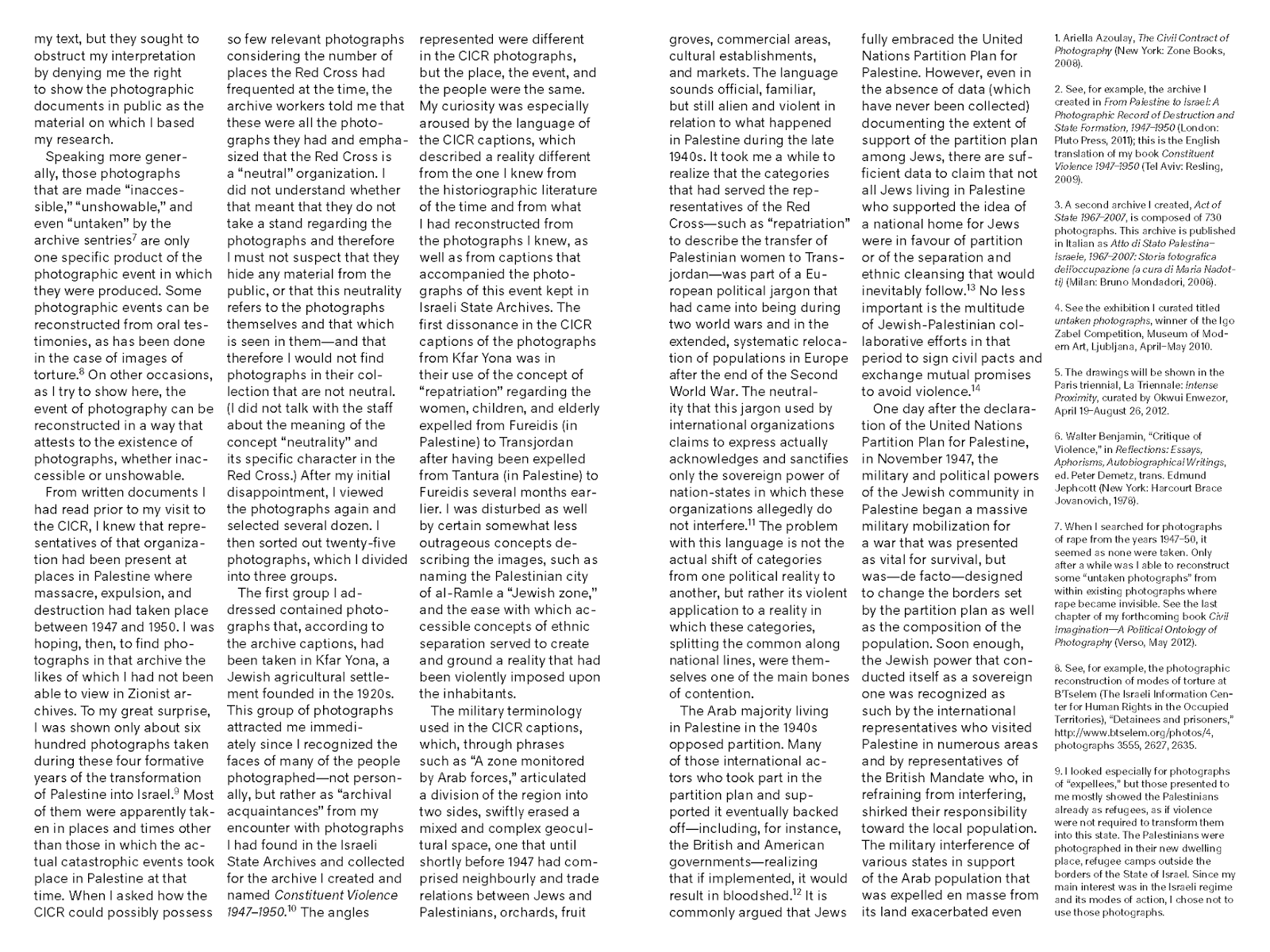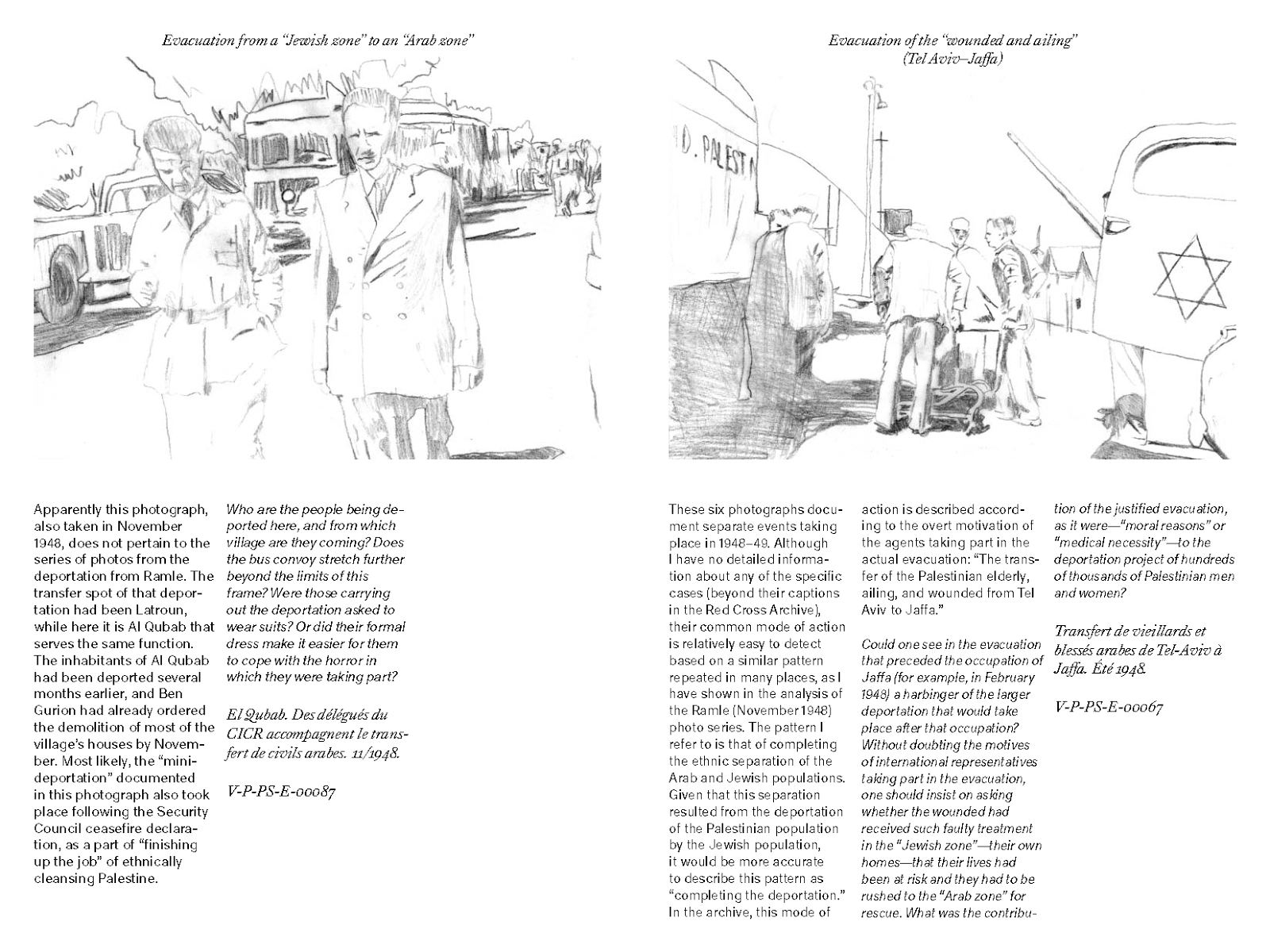Here is a drawing by
Ariella Azoulay, a
uthor of the book "The Civil Contract of Photography" (Zone Books, 2008), an art curator, film-maker and theorist of photography and visual culture.
The image was drawn over a photography taken in 1949 depicting a group of Palestinian women and Children, part of 1100 Palestinian refugees who were deported from the villages and forced to quit the Jewish zone and to transfer to the town of Tul Karem then at the other side of the border (now in the West Bank occupied by Israel since 1949).
In this case, the drawing was a necessity: it was made in order to bypass the censor's interdiction to use this photography found in a Red Cross archive.
Sometimes, like in this case or in places where a camera and photography is not allowed (courtrooms, for example), drawing remains the only means of representation and testimony.
According to Azoulay's own testimony, beside displaying to the very act of interdiction and censorship, the act of drawing and the necessity to repeat with her hand all the photography's details enabled her to discover small but crucial details that had escaped her careful observation.
 |
[Région de Tul karem. Femmes et enfants faisant partie d'un transfert de 1100 personnes quittant la zone juive pour gagner la zone arabe]
I like to spend much time with photographs until the recorded scene comes to life and the specific point of view from which they were taken ceases to dominate the event of photography that I participate in. When I began to draw the photographs, I was surprised to discover that in spite of my careful observation, many details had escaped my attention. Only upon tracing the photograph that opens this series, for example, did I realize I was much too taken with the girl resolutely marching at the head of the line. Having always followed the procession in her footsteps, I had forgotten the other girls. The act of drawing exposed to me the girl who was having difficulty walking, the one whose legs were buckling under her, who had not the strength to do what was now required of her and march erect. She needs the comforting hand not only of her mother but of another woman as well. The hands of the two women walking beside her are full. One holds a baby, the other carries a heavy sack on her head. Neither of them is having an easy time, but their hardship pales in view of this girl’s need of two hands to hold her, to reassure her, pressing her little palm to let her know she is safe, that two hands would forever hold her, even while ordered to walk many miles in the sand, thirsty, tired, sad, lost (AA) |
Appendix booklet:
Ariella Azoulay / Unshowable Photographs: An Introduction to Different Ways Not To Say Deportation (2012)




















.jpeg)
.jpeg)
.jpeg)
.jpeg)
.jpeg)
.jpeg)

